[Ganghwa Nadeul-gil Course 5] Gobigogae Pass Trail ([강화 나들길 제5코스] 고비고개길)
407.5352233477402m 23287 2021-02-23
24, Cheonghadong-gil, Ganghwa-gun, Incheon
+82-32-934-1906
The Ganghwa Nadeul-gil Trails are a collection of walking paths along the coast of Ganghwa Island that connect the watchtowers and and walls of Ganghwasanseong Fortress, as well as royal tombs and other historically significant sites from the Goryeo dynasty that dot the island.
[Ganghwa Nadeul-gil Course 5] Gobigogae Pass Trail
Course 5 stretches over a 20.2 kilometer section between Ganghwa Bus Terminal and Oepo Passenger Terminal. This trail is a restoration of the path crossing the low mountain, walked on by past generations when visiting Ganghwa Market.
[Ganghwa Nadeul-gil Course 4] Sunset Village Trail ([강화 나들길 제4코스] 해가 지는 마을 길)
407.5352233477402m 23150 2021-02-23
24, Cheonghadong-gil, Ganghwa-gun, Incheon
+82-32-934-1906
The Ganghwa Nadeul-gil Trails are a collection of walking paths along the coast of Ganghwa Island that connect the watchtowers and and walls of Ganghwasanseong Fortress, as well as royal tombs and other historically significant sites from the Goryeo dynasty that dot the island.
[Ganghwa Nadeul-gil Course 4] Sunset Village Trail
Course 4 stretches over an 11.5 kilometer area between Gareung Tomb and Mangyangdondae Fortification. This trail is especially popular among couples thanks to the romantic views of the sunset along the way. Other views include farming communities and fish markets.
[Ganghwa Nadeul-gil Course 3] Royal Tomb Trail ([강화 나들길 제3코스] 고려왕릉 가는 길)
407.5352233477402m 23110 2021-06-02
24, Cheonghadong-gil, Ganghwa-gun, Incheon
+82-32-934-1906
The Ganghwa Nadeul-gil Trails are a collection of walking paths along the coast of Ganghwa Island that connect the watchtowers and and walls of Ganghwasanseong Fortress, as well as royal tombs and other historically significant sites from the Goryeo dynasty that dot the island.
[Ganghwa Nadeul-gil Course 3] Royal Tomb Trail
Course 3 stretches over a 16.2 kilometer area between Onsu Parking Lot and Gareung Tomb. This trail showcases the royal tombs of the Goryeo dynasty. The trail passes through forested areas between tombs and temples.
[Ganghwa Nadeul-gil Course 1] Simdo History & Culture Trail ([강화 나들길 제1코스] 심도역사문화길)
407.5352233477402m 28800 2022-09-27
24, Cheonghadong-gil, Ganghwa-gun, Incheon
+82-32-934-1906
The Ganghwa Nadeul-gil Trails are a collection of walking paths along the coast of Ganghwa Island that connect the watchtowers and and walls of Ganghwasanseong Fortress, as well as royal tombs and other historically significant sites from the Goryeo dynasty that dot the island.
[Ganghwa Nadeul-gil Course 1] Simdo History & Culture Trail
Course 1 stretches over an 18-kilometer area between Ganghwa Bus Terminal and Gapgot Fortification. The trail includes sites such as Yongheunggung Palace, Ganghwahyanggyo Local Confucian School and an Anglican church. The course is an easy walk, with plenty of areas to stop and explore, as well as restaurants and convenience facilities for an enjoyable stroll.
Joyang Bangjik Cafe (조양방직)
471.14034986169634m 99 2023-11-13
12 Hyangnamu-gil 5beon-gil, Ganghwa-gun, Incheon
+82-32-933-2192
Joyang Bangjik, which means Joyang Textile in English, was the first rayon factory established with domestic funds in 1933 in Ganghwa, but were closed down as Ganghwa textiles declined over the years. The empty building was left in ruins until it became renovated as a huge cafe. A demolished wall became a wonderful art gallery and movie theater, a long workbench was turned into a coffee table, and the space where machines and people worked was filled with antiques found in China and Europe. A British door with a broken window, a round mirror from an old train in the Czech Republic, and a fish-shaped bun machine that struggled to turn itself over every winter are naturally arranged as if they were there originally, giving an impression of time throughout the cafe by utilizing the factory and building frame of more than 990 square meters. Currently, various drinks and cakes are offered.
Ganghwa Ginseng Center (강화 인삼센터)
867.1030216121632m 37797 2021-05-07
335, Ganghwa-daero, Ganghwa-gun, Incheon
+82-10-9314-3348
The cultivation of Ganghwa ginseng began during the era of King Gojong (A.D. 1232) of the Goryeo dynasty. In 1920, Ganghwado Island was designated a special district for ginseng cultivation. At the onset of the Korean War (1950-1953), the people of Gaeseong, the birthplace of ginseng cultivation, took refuge on Ganghwado Island and began to cultivate ginseng on a large scale, which was the beginning of the production of the famous 6-year-old root of ginseng.
Ganghwado Island has the optimal environment for ginseng cultivation with clay soil, sandy loam, and a cool climate condition influenced by coastal winds. The thick root of Ganghwa ginseng does not have any inside cavity or white interior. This is how Ganghwa became a leading producer of the 6-year-old root, which has a high rate of red ginseng extract, cheonji.
Ganghwa Ginseng Center handles quality ginseng guaranteed in its cultivation, processing, and distribution, owing to the utmost care exerted to provide safe and reliable products.
Ganghwahyanggyo Confucian School (강화향교)
913.0063436768272m 22552 2020-06-29
58, Hyanggyo-gil, Ganghwa-gun, Incheon
+82-32-930-4571
First established in Ganghwa-eup during the 5th year of King Injong in the Goryeo dynasty (1127), Ganghwahyanggyo Confucian School was moved to Ganghwa-gun and then restored at the foot of Buksan Mountain (formally Songaksan Mountain) in 1624 by Sim Yeol during the 2nd year of King Injo.
Ganghwahyanggyo Confucian School is regarded as an important cultural and historical site in Ganghwa-eup.
Ganghwasanseong Fortress (강화산성)
917.3163765388759m 13509 2020-03-16
San 3, Gukhwa-ri, Ganghwa-gun, Incheon
+82-32-930-5464
Ganghwasanseong Fortress was originally earthen mountain walls, built during King Go Jong’s 19th year of reign (1232), after he moved to Ganghwado. It was built to repel attacks from the Mongols. The inner castle was destroyed when the capital was moved to another place, and at the beginning of the Joseon Era (1392-1910) the wall was again rebuilt with mud.
It went through much restoration until finally being rebuilt with stones. Ganghwasanseong Fortress originally had interior and exterior walls, but only the interior wall remains today. It has an approximate circumference of 1.2km. The exterior mud wall was approximately 9km in circumference with 8 gates. The huge exterior wall was built along the side of the east channel of Ganghwa, but no longer exists today. From 1977, the interior wall has been rebuilt many times over, but the east side of this wall has yet to be reconstructed.
There were four main gates in the wall. To the south, Anparu; to the east, Cheomhwaru; to the west, Manghanru; and to the north, Jinsongru. At the west gate, the historic Yeonmudang still remains. This area was where the soldiers used to train, and was also the place where the Korea-Japan Treaty of Peace and Amity (or Treaty of Ganghwa Island) was signed in 1876.
With its aching history
left behind and beautiful scenery, Ganghwasanseong Fortress serves as an ideal place for a brisk walk or refreshing drive.
Ganghwa Seoksumun Gate (강화 석수문)
926.0178712049682m 13635 2020-02-06
Gukhwa-ri, Ganghwa-gun, Incheon
+82-32-930-4571
Seoksumun is a floodgate on the Dongnakcheon Stream, which flows through the town of Ganghwa-eup. The floodgate was built in 1711 (37th year of King Sukjong’s reign during the Joseon Period) and it is connected to the inner walls of the Ganghwasanseong Fortress. It is an arched structure with a design of three rainbows coming together. Made of granite, the floodgate measures 18.2 meters in length and 2.7 meters in x_height, while the arches are 1.7 meters tall, and 3 meters wide.
[Ganghwa Nadeul-gil Course 2] Homeland Fortification Trail ([강화 나들길 제2코스] 호국돈대길)
3.1 Km 23046 2021-08-11
24, Cheonghadong-gil, Ganghwa-gun, Incheon
+82-32-934-1906
The Ganghwa Nadeul-gil Trails are a collection of walking paths along the coast of Ganghwa Island that connect the watchtowers and and walls of Ganghwasanseong Fortress, as well as royal tombs and other historically significant sites from the Goryeo dynasty that dot the island.
[Ganghwa Nadeul-gil Course 2] Homeland Fortification Trail
Course 2 stretches over a 17 kilometer area between Gapgotdon Watchtower and Chojijin Fort. This trail showcases the history of the island and the changes that happened before and after the opening of the port. The course follows a coastal road that is particularly beautiful in spring and fall.
![[Ganghwa Nadeul-gil Course 5] Gobigogae Pass Trail ([강화 나들길 제5코스] 고비고개길)](http://tong.visitkorea.or.kr/cms/resource/21/1895221_image2_1.jpg)
![[Ganghwa Nadeul-gil Course 4] Sunset Village Trail ([강화 나들길 제4코스] 해가 지는 마을 길)](http://tong.visitkorea.or.kr/cms/resource/16/1895216_image2_1.jpg)
![[Ganghwa Nadeul-gil Course 3] Royal Tomb Trail ([강화 나들길 제3코스] 고려왕릉 가는 길)](http://tong.visitkorea.or.kr/cms/resource/11/1895211_image2_1.jpg)
![[Ganghwa Nadeul-gil Course 1] Simdo History & Culture Trail ([강화 나들길 제1코스] 심도역사문화길)](http://tong.visitkorea.or.kr/cms/resource/97/1895197_image2_1.jpg)
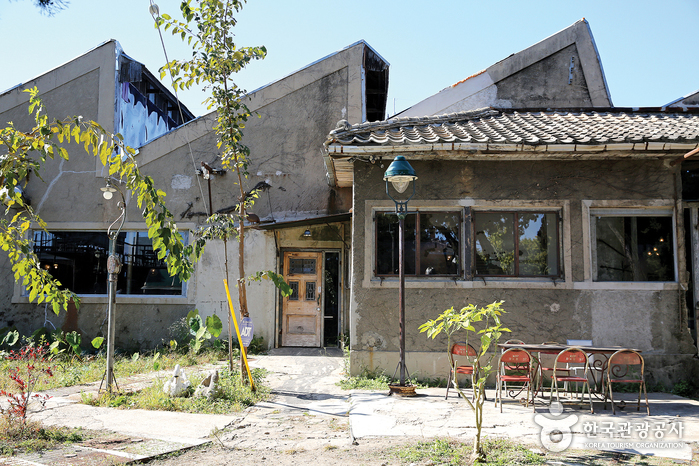
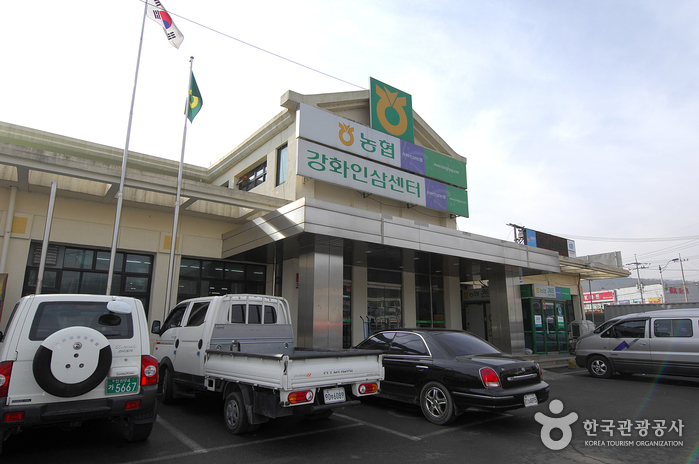
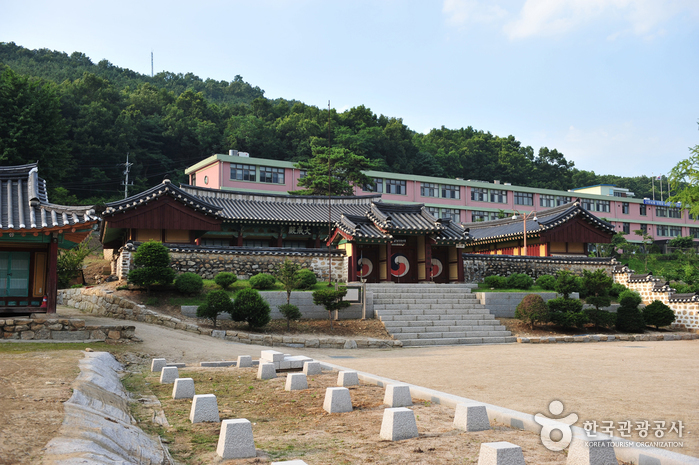
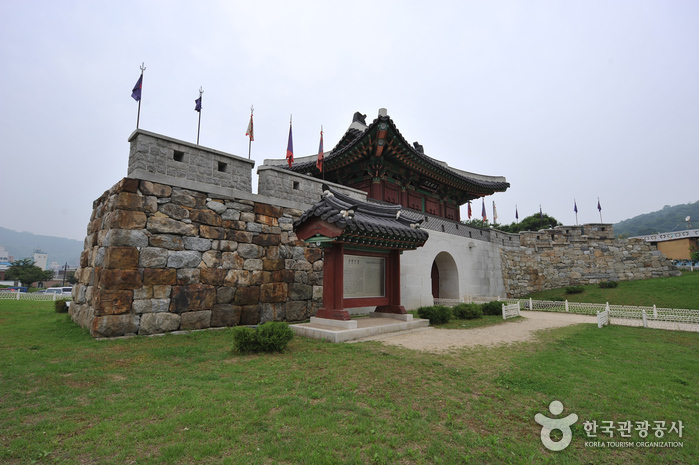
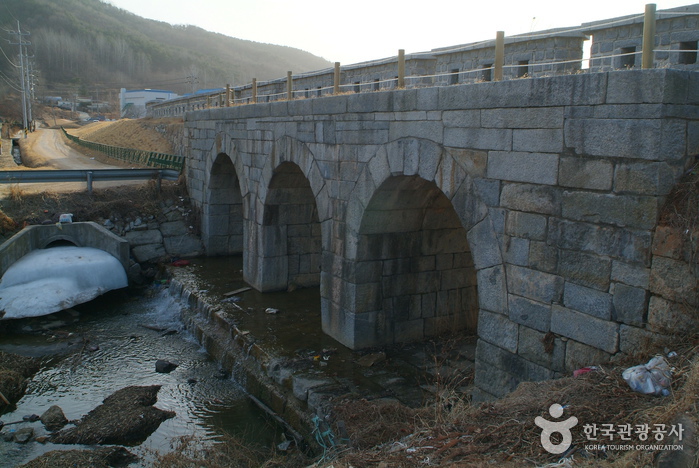
![[Ganghwa Nadeul-gil Course 2] Homeland Fortification Trail ([강화 나들길 제2코스] 호국돈대길)](http://tong.visitkorea.or.kr/cms/resource/05/1895205_image2_1.jpg)
 English
English
 한국어
한국어 日本語
日本語 中文(简体)
中文(简体) Deutsch
Deutsch Français
Français Español
Español Русский
Русский